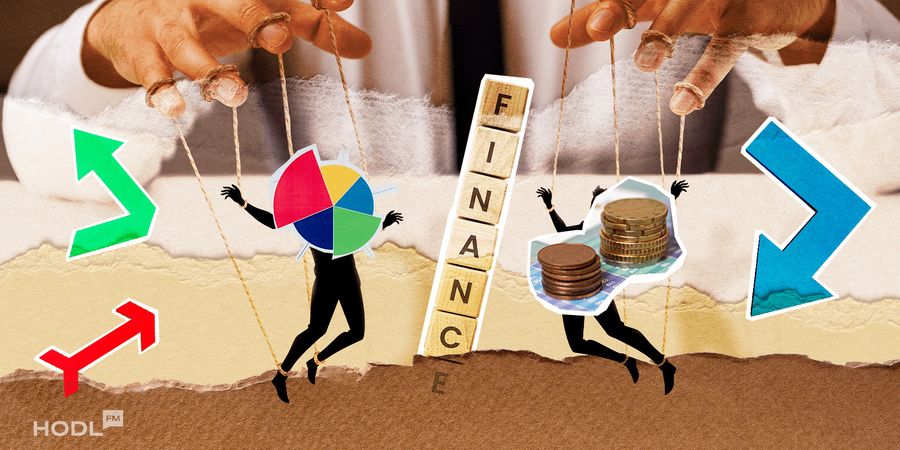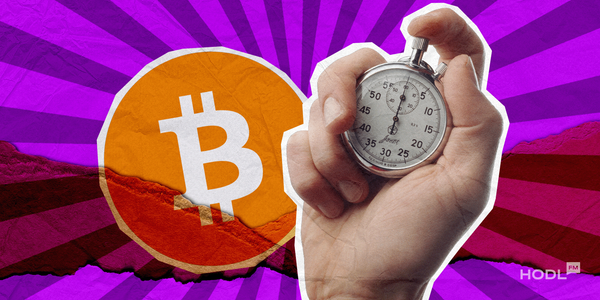Advertisers will devise a slogan that gives their audience a myopic and persuasive image of themselves, so they’ll swallow all their vitriol. The ability to control the meaning of words as a tool of manipulation is what Wash trading – the illegal power to mislead market participants on the price of an asset – is made of. Since the unlimited power of words in a few people’s lips can lead to financial cruelty, this article, hodlers, exposes wash trading so you can detect it and avoid falling prey to it.

What is Wash Trading?
Wash trading, also called trip trading, is an illegal situation where a trader buys and sells the same asset intending to mislead the financial markets. In most cases, the trader colludes with a broker so the investor can act as the buyer and seller to create an artificial trading volume and hoodwink other investors into buying. Some brokers and high-frequency crypto exchanges have been accused of this form of manipulation. Since rigged games are the easiest to beat, you must arm yourself with the correct detection methods to avoid falling victim in the cryptocurrency market. The fraudsters artificially prop up an asset price and its trade volume by implementing a wash trade.
Read more: Crypto Trading Strategies: A Guide for Beginners
Mechanics of Wash Trading
An investor will need multiple accounts to place sell and buy orders for security to execute a wash trade. The monkey business of buying and selling to oneself is a form of insider trading since the trader has more knowledge than other traders. To avoid being detected, many such traders won’t execute the buying and selling to themselves immediately; they would wait for a safe period to avoid detection. The result of artificially inflating a financial instrument’s trade volume gives other investors the impression that the asset is in high demand. The resultant artificial trading volume creation drives the price of incredibly illiquid assets.

Motivations behind Wash Trading
The rise of the popularity of cryptocurrency trade and enhanced technological development created favorable conditions for Wash trading. Fraudsters took advantage of folks’ enthusiasm for crypto investment and the desire to complete huge trades in a split second to trick gullible traders into getting involved.
Among the reasons people participate in Wash trading include the following:
- Price manipulation: Wash traders will attempt to manipulate prices to favor them by artificially inflating prices so they can sell their stock for a considerable margin.
- Liquidity enhancement: Wash traders buy and sell an asset frequently to create market liquidity by making the asset look more liquid than it is. Once they attract many traders aiming to profit quickly, they sell at higher prices, leaving them with a red herring.
- Tax evasion: Traders can also use wash trade as a means of tax evasion to evade regulatory actions by hiding their actual trading activity and their profits. By making it difficult for tax authorities to track their movements, they can claim trade losses and reduce their tax obligations.
Detection and Consequences
As an investor, you can avoid becoming a victim of wash trading by learning simple detection methods. Still, first, you must know what constitutes an illegal sale or trade. Moreover, you also want to avoid being inadvertently accused of wash sales by failing a market integrity test if you place similar trades within a short period, whether you are familiar with the rules or not.
More Info:
- The Role of Cryptocurrencies in Cross-Border Trade and Supply Chain Financing
- Navigating the Crypto-Tax Labyrinth: A Field Guide for Cryptocurrency Adventurers
- Crypto Slang 101: The Ultimate Guide
You can avoid the penalties of being accused of being a wash trader yourself by checking the assets you’re buying and selling and the time frame within which you complete the transactions. For example, if you sell a particular crypto asset at a loss and then buy it a few days later to sell at a profit, you’ll most likely be suspected of wash trading even if you only wanted to try and reduce your losses.
A recent Chainalysis NFT Market Report showed that NFTs are especially prone to wash trading, but the same trends can apply to the entire crypto market.
According to the firm, blockchain analysis is the best way to detect and avoid becoming a victim by looking out for the following telltale signs:
- Price: If the price of an asset is significantly higher than the floor price, there are chances it’s been wash traded
- Transaction history: Use blockchain analysis tools to check the transaction history of an asset.
- Previous owners: Look out to see if a trader’s wallet address appears multiple times.

Real-World Examples
The best example of wash trading hit the headlines in October 2021 when it became apparent that the owner of CryptoPunk #9998 bought his own NFT at $532 million. Other prominent case studies include:
- Hydrogen Technology Corporation: The U.S. Securities and Exchange Commission (SEC) sued Moonwalkers Trading and Hydrogen Technologies CEOs in September 2022 for manipulating a crypto security’s trade volumes.
- LooksRare Marketplace: The LooksRare NFT marketplace registered three times the trading volume of market leader OpenSea within a month of its launch in January 2022. Nonetheless, the former had 17 times fewer traders than the latter over the same period. The 80% artificial trading volume was later attributed to a lack of transparent markets and market manipulation.
Preventive Measures
Since crypto exchanges and other crypto and NFT platforms will mostly be accused of perpetrating this vice, they need to be vigilant in doing market surveillance besides fighting to have regulatory efforts put in place by the authorities.

Ideas for tracking wash trading:
- Eliminate trading games: Wash trading in most prominent exchanges is the side effect of trading games designed to promote a particular token. Bad actors exploit the situation by generating wash trades to win the games and earn the bounty. Exchanges should desist from games that don’t encourage orderly markets.
- Single fee schedule: Tiered fee schedules can inadvertently propagate wash trading since unscrupulous participants can decide to wash trade their way up to achieve better fee schedules.
- Prevent self-trade: Platforms can increase their market surveillance to ensure orders from the same account or digital wallet aren’t matched with each other.
- Single institutional accounts: Exchanges should institute robust KYC/AML practices to ensure traders and institutions are restricted to a single account.
Those individuals and platforms that perpetrate wash trading do it with the sole intention of deceiving and misleading market participants about the price of a digital asset. The vice mostly happens in crypto and NFT platforms that are less liquid, especially because regulatory efforts are yet to catch up with the crypto space. Until such happens, your business is trying to avoid being victimized by using well-respected crypto markets that promote transparent markets and have a history to prove it. Most importantly, take the time to educate yourself on this topic so you can become a better crypto investor.
Disclaimer: All materials on this site are for informational purposes only. None of the material should be interpreted as investment advice. Please note that despite the nature of much of the material created and hosted on this website, HODL FM is not a financial reference resource and the opinions of authors and other contributors are their own and should not be taken as financial advice. If you require advice of this sort, HODL FM strongly recommends contacting a qualified industry professional.




